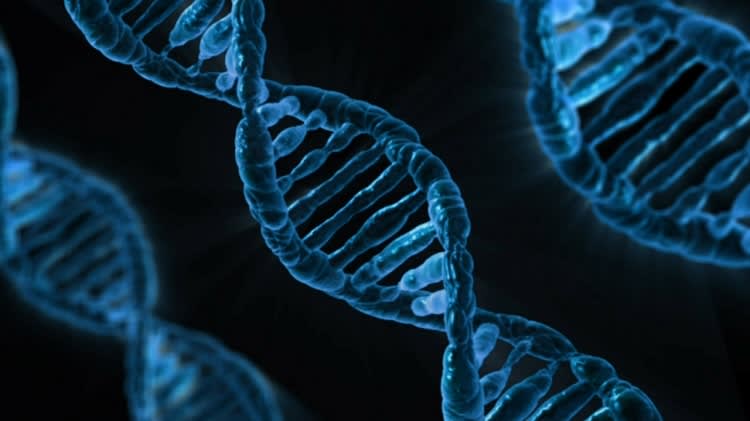
Kenneth C. Oh
Counsel
212-784-6911 koh@sh-law.comAuthor: Kenneth C. Oh|July 3, 2013
The justices concluded that a naturally occurring DNA segment is a product of nature and not patent eligible merely because it has been isolated, but that cDNA (complimentary DNA) is patent eligible because it is not naturally occurring.
The patents at issue in Association For Molecular Pathology. et al. v. Myriad Genetics, Inc., et al. relate to Myriad’s discovery of the precise location and sequence of the BRCA1 and BRCA2 genes. Mutations in these genes can dramatically increase an individual’s risk of developing breast and ovarian cancer. Myriad had used its DNA patents to claim exclusive rights to isolate an individual’s BRCA1 and BRCA2 genes for testing.
The Court found that Myriad’s DNA claim falls within the law of nature exception to patent eligibility. As explained in the opinion, “Myriad did not create or alter either the genetic information encoded in the BCRA1 and BCRA2 genes or the genetic structure of the DNA. It found an important and useful gene, but groundbreaking, innovative, or even brilliant discovery does not by itself satisfy the §101 inquiry.”
As a natural product, that human DNA cannot be patented was a result obvious to many. While initially celebrated as a victory for civil liberties, scientific freedom, and patients, the implications of the decision are not clear.
The Court also concluded that cDNA is not a “product of nature” and, thus, it is patent eligible. “Its creation results in an exons-only molecule, which is not naturally occurring. Its order of the exons may be dictated by nature, but the lab technician unquestionably creates something new when introns are removed from a DNA sequence to make cDNA.” the Court held.
While the decision at first glance seems to draw a simple, bright line between DNA (not patentable) and cDNA (patent eligible), it may just be the initial stage of the next patent battles, for cDNA is the workhorse in molecular research. However, cDNA is, in a nutshell, a laboratory “copy” (that has the same genetic information as a copied gene) that does not require much effort to create.
As for how the decision will impact patents currently pending before the U.S. Patent and Trademark Office, the agency has already issued preliminary guidance. It states that Myriad significantly changes the Office’s examination policy regarding nucleic acid-related technology. Going forward, the USPTO provides the following guidance to its patent examiners:
As of today, naturally occurring nucleic acids are not patent eligible merely because they have been isolated. Examiners should now reject product claims drawn solely to naturally occurring nucleic acids or fragments thereof, whether isolated or not, as being ineligible subject matter under 35 U.S.C. § 101. Claims clearly limited to non-naturally-occurring nucleic acids, such as a cDNA or a nucleic acid in which the order of the naturally occurring nucleotides has been altered (e.g., a man-made variant sequence), remain eligible. Other claims, including method claims, that involve naturally occurring nucleic acids may give rise to eligibility issues and should be examined under the existing guidance in MPEP 2106, Patent Subject Matter Eligibility.
To be sure, by invalidating the DNA patents, the Court did lift a barrier to innovation, but whether scientific and medical progress is facilitated by the decision remains to be seen, as trade secrets protection of discoveries will likely be emphasized in the future.
If you have any questions about this case or would like to discuss the legal issues involved, please contact me, Kenneth Oh, or the Scarinci Hollenbeck attorney with whom you work.

Counsel
212-784-6911 koh@sh-law.comThe justices concluded that a naturally occurring DNA segment is a product of nature and not patent eligible merely because it has been isolated, but that cDNA (complimentary DNA) is patent eligible because it is not naturally occurring.

The patents at issue in Association For Molecular Pathology. et al. v. Myriad Genetics, Inc., et al. relate to Myriad’s discovery of the precise location and sequence of the BRCA1 and BRCA2 genes. Mutations in these genes can dramatically increase an individual’s risk of developing breast and ovarian cancer. Myriad had used its DNA patents to claim exclusive rights to isolate an individual’s BRCA1 and BRCA2 genes for testing.
The Court found that Myriad’s DNA claim falls within the law of nature exception to patent eligibility. As explained in the opinion, “Myriad did not create or alter either the genetic information encoded in the BCRA1 and BCRA2 genes or the genetic structure of the DNA. It found an important and useful gene, but groundbreaking, innovative, or even brilliant discovery does not by itself satisfy the §101 inquiry.”
As a natural product, that human DNA cannot be patented was a result obvious to many. While initially celebrated as a victory for civil liberties, scientific freedom, and patients, the implications of the decision are not clear.
The Court also concluded that cDNA is not a “product of nature” and, thus, it is patent eligible. “Its creation results in an exons-only molecule, which is not naturally occurring. Its order of the exons may be dictated by nature, but the lab technician unquestionably creates something new when introns are removed from a DNA sequence to make cDNA.” the Court held.
While the decision at first glance seems to draw a simple, bright line between DNA (not patentable) and cDNA (patent eligible), it may just be the initial stage of the next patent battles, for cDNA is the workhorse in molecular research. However, cDNA is, in a nutshell, a laboratory “copy” (that has the same genetic information as a copied gene) that does not require much effort to create.
As for how the decision will impact patents currently pending before the U.S. Patent and Trademark Office, the agency has already issued preliminary guidance. It states that Myriad significantly changes the Office’s examination policy regarding nucleic acid-related technology. Going forward, the USPTO provides the following guidance to its patent examiners:
As of today, naturally occurring nucleic acids are not patent eligible merely because they have been isolated. Examiners should now reject product claims drawn solely to naturally occurring nucleic acids or fragments thereof, whether isolated or not, as being ineligible subject matter under 35 U.S.C. § 101. Claims clearly limited to non-naturally-occurring nucleic acids, such as a cDNA or a nucleic acid in which the order of the naturally occurring nucleotides has been altered (e.g., a man-made variant sequence), remain eligible. Other claims, including method claims, that involve naturally occurring nucleic acids may give rise to eligibility issues and should be examined under the existing guidance in MPEP 2106, Patent Subject Matter Eligibility.
To be sure, by invalidating the DNA patents, the Court did lift a barrier to innovation, but whether scientific and medical progress is facilitated by the decision remains to be seen, as trade secrets protection of discoveries will likely be emphasized in the future.
If you have any questions about this case or would like to discuss the legal issues involved, please contact me, Kenneth Oh, or the Scarinci Hollenbeck attorney with whom you work.